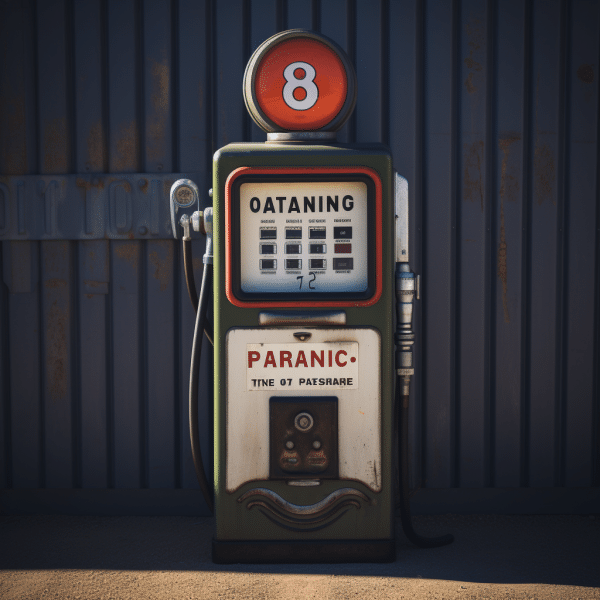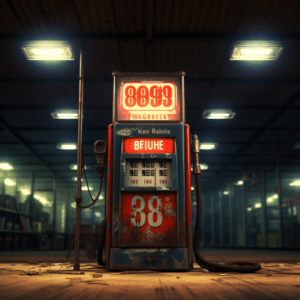
Octane 87 and 89 Gasoline: A Practical Guide
I remember the first time I stood at the pump wondering whether mixing 87 and 89 octane would wreck my engine or just save me a few cents. As someone who’s always been curious about how cars actually work, I went down a rabbit hole of research – and even asked a few mechanics along the way. Turns out, the answer isn’t as dramatic as I expected. In this post, I’ll break down what really happens when you mix octane levels, when it’s okay, and when it’s best to avoid it.
Notably, using the wrong fuel type can hurt your vehicle. Therefore, you need to always be cautious about what you pump into your machine. In some cases, you might encounter a fuel shortage crisis, and you are left wondering what to do. For example, you might be an avid user of octane 87 gas, and on trying to top up your car in the nearest fillings station, you only find gas 89. Now, will you mix the two different grades of fuel?
If you’ve been looking for the correct answers to questions of such kind, you’re at the right place. Stay tuned and keep scrolling.
It’s possible and okay for you to mix octane 87 and octane 89 gas. The two gasoline varieties have different grades, but it’s what the car engines need to keep moving. If you mix 87 and 89 acetone equally, you will get an average octane rating of 88.
Mixing a more incredible amount of one grade than the other will create a bias whereby the octane rating will shift more towards the more prevalent constituent. If your car uses the regular octane with a grading of 87, increasing the octane rating to 89 means that the vehicle can run better with good fuel economy and more power.
octane gasoline

It’s allowed that you mix 87 octane and 89 octane. The mixture won’t harm your car since the two octane grades belong to the same class of gasoline. 50% of 87 octane gasoline and 50% of 89 octane gasoline produce an octane grade of 88.
Most of the gas stations found in various parts of the world sell 87, 89, and 91 octanes. In addition, they have a mixer pump in addition to the underground tank for each variety. If a car owner, for example, requests a mid-grade of 89 octane and it’s already finished at the tanks, the pump mixer will combine the 50/50 of 87 and 89 octane from the underground tanks to produce the 89 gas.
The standardized octane grade of 87 or 89 is mainly recommended for diverse automobiles on the road. In a normal car, premium gasoline 90-93 is perfect. According to car experts, using premium fuel in a regular vehicle poses little harm.
Octane measures a fuel’s ability to prevent knock or how much compression it can endure before igniting. Regular gasoline is known to have an octane rating of 87, “midgrade” has an octane rating of 89, and premium gas has an octane rating of above 91. Top-tier gasoline with a 93 octane rating is referred to as ultra-gas.
Can You Use 81 Or 89 Octane Gas In A Premium Car?
When it comes to high-end vehicles, experts advise against using anything other than the manufacturer’s recommended grade of gasoline. According to the World Toyota’s Service Center, lower octane promotes pre-ignition, which causes banging in a premium automobile. That can harm your car’s motor system and perhaps its computer.
The engine might be damaged if the octane is less than 91. Unfortunately, the car warranty would not cover the repairs. When using 93 octane fuel, vigorous knocking indicates that the engine needs to be serviced.
Furthermore, you should constantly check to see if your vehicle demands premium gasoline. If it suggests a lower grade, you can choose between regular and premium, with no change in quality but rather price.
Check the sticker at the driver’s side door or consult your vehicle’s owner’s handbook to know the octane level recommended for your vehicle.
Can You Use 90-93 Octane Gas In A Standard Car?
Octane grades of 87 or 89 is preferred by most automobiles. In a standard vehicle, 90-93 gas poses no harm. Despite what you might have heard, premium gasoline will not clear deposits from your fuel injectors or other sections of the fuel system any better than ordinary gasoline since both contain the same chemicals.
What Happens When You Put The Wrong Gas In Your Vehicle?
Although there are rare exceptions, generally speaking, using a higher-octane gas in your automobile than it requires will not affect its performance. The error shouldn’t do any significant damage to your vehicle; simply ensure that you use the right octane fuel the next time you fill-up.
Signs that you’ve Bad Gas in Your Car
- Difficulty in starting.
- Higher emissions.
- Pinging sounds.
- Reduced fuel economy.
- Rough idling.
- Stalling.
- Weak engine light illumination.
Can You Switch From Premium Gas To Regular Gas?

Is it possible to blend premium and unleaded gas? Yes, car owners are allowed to mix the two types of fuel. According to The Drive, the blended gas result has an octane level somewhere in the center, the range in which the car can “survive”.
After switching, the only thing that will change is the speed at which the octane burns. Higher grade octane gas undergoes additional processing procedures that improve the mix and burn more slowly than the lower level octane gas. When exposed to greater RPM and cylinder pressures, premium gas burns slower and is more resistant to knock. Cylinder pressures are also affected by compression ratios.
From what I’ve learned (and tried myself), mixing 87 and 89 won’t harm most modern engines, especially if your car’s manual gives you some flexibility. That said, always consider your driving habits, your car’s performance needs, and whether a few cents saved are worth it in the long run. Fueling smart isn’t just about price — it’s about understanding your car and driving with intention.
Conclusion
It’s perfectly fine to mix octane 87 gas and octane 89 gas. On the other hand, mixing the premium and regular gas is not recommended. It will exert a minor influence on a vehicle’s performance. Only premium automobiles that demand higher octane fuel may experience a little loss of performance or engine banging. Next time, don’t feel desperate amid the gas shortage crisis, you can easily mix 87 and 89 gas for your regular car.
